Contact :
The Briar and the Rose (Beltane)
A spread inspired by a traditional ballad
Though it was designed to be used in May, this spread may be done whenever the querent need this kind of insight, no matter what time of the year it is. Its connection to the month of May comes from the folk ballad “Barbara Allen”, which inspired it. This song tells the sad story of two lovers, the one too proud to forgive the other’s hurtful behavior.
The story of “Barbara Allen”
From Scotland to the United States
The earliest known versions of this ballad date back to XVIIth century Scotland, where Barbara and Sweet William are common folklore figures. Throughout the years and due to people leaving Europe, the song was brought to the United States and was soon integrated into the musical folklore, too. It was collected by Francis James Child during the XIXth century when he decided to compile American traditional and folk songs with English and Scottish origins, attributing a number to each one in order to make classification easier. That is why “Barbara Allen” is also referred to as “Child Ballad #84” or “Child 84”.
The legend of Barbara Allen and Sweet William
As it survived throughout the centuries and spread to different areas, the ballad went through a large number of transformations and adaptations. The song was transmitted orally, which led to many variations as the legend evolved as nuances were added to the main frame according to which features or feelings singers wanted to put into light.
However, the basic structure is always the same: the story takes place in May when flowers and trees are in bloom, in a small town which is sometimes identified and sometimes nameless. The love he feels for Barbara Allen makes Sweet William very sick, which forces him to stay in bed. As he wants to talk to her, he sends his servant to get Barbara Allen to come and see him. She reluctantly accepts to come to his bedside but as she gets there her attitude and words are cruel, for she explains she cannot forgive the way Sweet William behaved with other women, which made her feel humiliated. She thus refuses to listen to what he has to say and only tells him coldly that he must be dying before leaving him to his sorrow. Sweet William understands he lost her for good and dies asking his friend to take care of she who broke his heart.
While walking back home, Barbara Allen hears about Sweet William’s death and realizes how hard-hearted she has been. She falls on the ground in sorrow and understands she has lost her true love. She dies the day after and is buried besides Sweet William in the old churchyard.
On William’s grave grows a rose and on Barbara’s a briar. As they grow from William’s and Barbara’s hearts, the rose and the briar intertwine to form a true lover’s knot, the rose wrapping around the briar. Sweet William and Barbara Allen are thus reunited beyond death.
The ballad and its multiple variations
The renditions of this ballad are countless, for various artists made their own versions by reappropriating the legend and the tune in their own style. Among the best adaptations are those by Pete Seeger, Joan Baez, Bob Dylan (“Barbara Allen” is one of his all time favorites and inspired several of his own songs), The Everly Brothers, Dolly Parton (with Altan, with the first and last verses in Irish Gaelic), Crystal Gayle, Johnny Cash (text adapted by Johnny Cash), Emmylou Harris, Simon & Garfunkel, Judy Collins, Marie Laforêt, or Blackmore’s Night.
A spread inspired by a musical coup de cœur
Ever since I listened to it for the first time, this song has been one of my favorites for I was enchanted by its magic and by the poetical way it deals with love and the different aspects of this complex feeling. The briar and the rose are very strong symbols and since they are at the heart of the story, I decided to use them to design this spread. That is why its shape pictures them as they grow from Barbara’s and William’s hearts, intertwining into the true lover’s knot that brings them together again at the end of the ballad.
This spread follows the usual structure of the story in chronological order, and each of its steps is represented by a card in one plant or in the other. As the story unfolds, one climbs up against the wall with the briar and the rose to finally reach the possibility of potential reconciliation, or in any case to find solace depending on the querent’s situation.
Object
This spread aims at examining to what extent and whether it is possible to mend a damaged relationship and find solutions to get what keeps the two lovers apart out of the way.
How to proceed
After shuffling and cutting the deck, draw fourteen cards and lay them as follows:
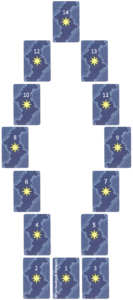
Interpretation
This spread is divided into four parts, each of them referring to key elements in the ballad. The first part is made of cards 1, 2 and 3 and represents the cemetery ground where the briar and the rose grow from; cards 4, 6, 8, 10 and 12 are the second part and depict the briar; cards 5, 7, 9, 11 and 13 are the third part and depict the rose. The last card (14) crowns the whole picture and represents the true lover’s knot formed by the intertwining briar and rose.
First part: The cemetery ground – the roots, the situation as it is (cards 1 to 3)
Card 1. The roots of the current situation, the situation as it is right now, the feelings of the two lovers at the time the cards are drawn.
Card 2. The roots of the briar: what broke the relationship, the grievances that initiated the quarrel.
Card 3. The roots of the rose: the feelings of love that still exist despite the current misunderstandings and animosity.
Second part: The briar – the situation as Barbara sees it (cards 4, 6, 8, 10 and 12)
Card 4: The sorrow that causes Barbara’s heart to turn to stone. The painful feelings generated by the actions and facts alluded to by card 2. The sorrow caused by the discord, and the resentment that keeps the two lovers apart.
Card 6: As she is hurt, Barbara refuses to listen to Sweet William. The reason why communication is not good between the two lovers. The lack of communication, why one refuses to communicate.
Card 8: Barbara hears about Sweet William’s death and realizes that she loves him. This card shows the emotional shock that leads to understanding that a painful change is needed in order to focus on the situation with a different point of view. Only then will it be possible to determine whether the feelings of love are still there. One realizes what they have lost.
Card 10: As a consequence to William’s death, Barbara’s sorrow is stronger than her resentment and she blames herself for being so cruel to him; she thus follows him to the grave. This card represents what one will regret (not) doing or (not) saying and points towards the first signs of reconciliation.
Card 12: Barbara is buried next to Sweet William. This card shows what leads the two lovers to get together again.
Third part: The rose – the situation from William’s point of view (cards 5, 7, 9, 11 and 13)
Card 5: Sweet William suffers from the situation and gets very sick. The consequences of the pain caused by the quarrel. This card shows what keeps the two lovers apart despite the feelings they share.
Card 7: Sweet William tries in vain to explain how he feels to Barbara. The communication attempts that were unsuccessful or that kept the two lovers apart instead of bringing them back together. The reasons why these communication attempts failed.
Card 9: Sweet William’s death. Resignation. Accepting the situation as it is and the possibility of a definitive break-up, of non reconciliation. This card can also show one’s good wishes for the other person. How one considers stepping aside and disappearing from the other’s love life if there is no other solution.
Card 11: Sweet William is buried in the old churchyard. What one is willing to sacrifice to mend the broken relationship, what one is willing to let go or to forgive in order to facilitate reconciliation and go towards a peaceful future.
Card 13: The rose that grows from Sweet William’s heart. The feelings that will survive and/or that will be reborn, helping the relationship to be peaceful again, giving it one more chance.
Fourth part: The true lover’s knot – the reunion of the two lovers and the overcoming of all difficulties (card 14)
Card 14: The knot formed by the briar and the rose as they grow up the wall. How the quarrel will be resolved; how the two lovers will find each other again (or not). How the efforts will pay, thus leading to the resolution of the conflict. The final outcome of the situation.
Further remarks
A complex spread to reflect the complexity of romantic relationships
This spread is quite complex, which is not due to the number of cards involved, but rather to its structure and to the fact that it allows a thorough analysis of a given situation. Indeed, it explores the querent’s relationship and the current conflict in the details. As a consequence, in order to produce a good interpretation, one has to take into account the complexity that is inherent to any relationship and to this kind of feelings.
The two parts entitled “the briar” and “the rose” respectively depict Barbara and William’s behaviors and feelings in the ballad, but one has to remember that things are rarely that clear or that distinct in everyday life. Though one of the two lovers might be blameless while the other might take full responsibility, things are far from being that simple: feelings are very often confused (and confusing), which leads to apparently contradictory words or actions that do not reflect what one really feels. That is why it is very important for the querent to be willing to be completely honest with themselves while doing this spread, for they will have to face their darkest – and most shameful – aspects. They will thus be face to face with their feelings, but also with their ability to hurt the one they love, which is rarely considered in such a detailed manner in tarot readings.
An outcome that remains open
In addition, it is important to note that although the structure of the spread follows the events alluded to in the ballad in chronological order, there is no guarantee that the outcome of the querent’s relationship will be the same! In other words, the end of the legend has the two lovers reunited beyond death, which marks their eternal and unbreakable union. Though it is obvious that the outcome shown in the spread uses Barbara and William’s death on a symbolical level, it is necessary for the reader to keep in mind that the outcome shown by the cards might not be as favorable to the couple: depending on the final card, it might indicate that it is impossible for the relationship to continue. The only outcome might thus be separation, for it is sometimes the only way for the two lovers to find serenity and peace of heart again.
This spread thus provides detailed analysis, taking into account all the aspects – however intricate they are – that govern any relationship, especially in difficult times when distance settles between the two lovers. Thanks to this spread, one can identify what caused the situation and get a glimpse of what they can do to mend the relationship… if these solutions exist. In any case, it helps to find solace, no matter what the actual outcome might be.
Which decks for this spread?
A tarot or an oracle deck will be the perfect tool for this spread (but Lenormand decks are not appropriate since they use their own system). However, considering the main subject of the spread, I recommend choosing a deck whose main theme is love. There are many decks displaying references to mythological or literary love stories, such as The Lover’s Path Tarot by Kris Waldherr, which is a wonderful tool. Decks focusing on self-exploration and introspection will be perfect, too. Among them, Madame Endora’s Fortune Cards and the gorgeous Chrysalis Tarot will be particularly relevant.
(© Morrigann Moonshadow, May 22nd, 2016; trans. June 1st, 2016. Further reproduction prohibited.)
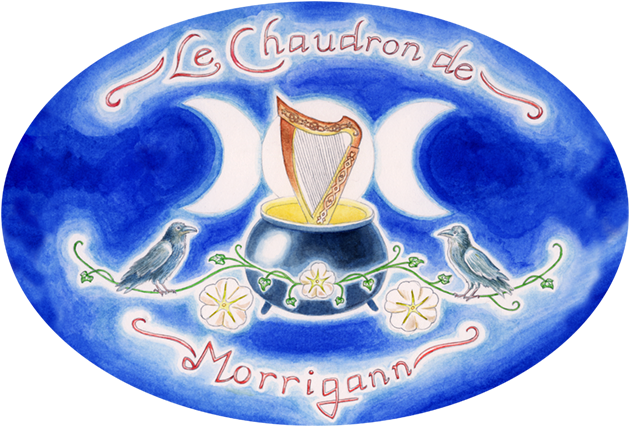
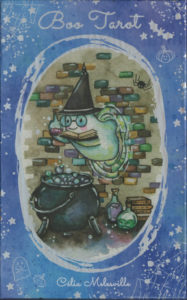
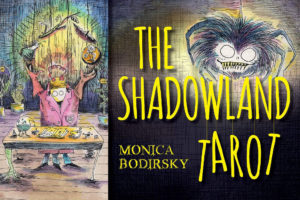
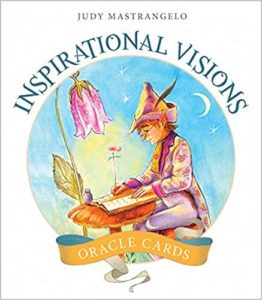
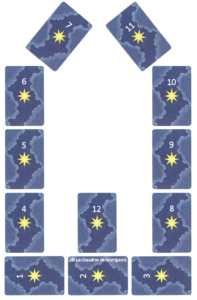
Morrigann – This is a BEAUTIFUL spread. I wanted to take a moment to simply tell you that you have intuited and created a powerful and effective spread. Thank you!
Hi Megan;
Thank you so much for your message! I really enjoyed creating this spread and I am so happy you like it!
Best wishes,
Morrigann